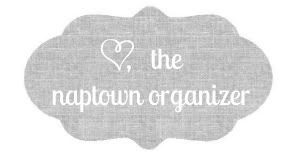Okay, ladies and gents! Mainly the ladies will want to stick around for this post, because it's all about charting your lady symptoms. We used charting to get pregnant with both little man and baby number two, and I've asked my friend Nicole to head on over here today and do a basic tutorial on what charting is. I find this to be an extremely important topic, and one that I hold close to heart. After trying unsuccessfully at first to get pregnant with little man, I read the book "Taking Charge of your Fertility" by Toni Weschler, which details charting and discusses the female reproductive system, and it pretty much changed my world. I'd been walking around with these lady parts for YEARS not having a clue how or why they worked the way they did. Like the fact that most women do NOT ovulate on cycle day 14... who knew? Anyway, if you're new to charting, check out Nicole's information below and definitely take a look at the book I mentioned above! Thanks, Nicole!
Hi guys, I'm Nicole from The Kavanaugh Report! If you haven't read The Kavanaugh Report, I blog about parenting, family life, and tot school with one wild little boy, Henry. I hope you come check us out.
Jayne's asked me to come share a little bit about charting your basal body temperature (BBT) with you.
Charting your BBT is a great way to get a clearer picture of what is going on with your body's fertility. Jayne and I both chart to have more control over our family planning decisions.
So, first things first, your BBT is your body's resting temperature after 2 or more hours of sleep. Your BBT is taken with a special thermometer right upon waking. It is best to take your BBT before getting out of bed, walking around, drinking, or even talking. It is literally the very first thing I do every single day.
 |
| An ovulatory cycle. You can clearly see the higher temperatures after ovulation. Then, the steep drop off on the first day of the period. |
Charting is actually pretty simple once you get the hang of it. Each day, you record your BBT and other fertility signs, including your cervical mucus and cervical position, to look for a very specific pattern. Charting is made even easier by a variety of online resources. My {and Jayne's} favorite is Fertility Friend. Fertility Friend provides everything you need to record and interpret your BBT chart. If you are seriously considering charting your BBT, I highly recommend using Fertility Friend.
So, what exactly are you looking for when charting? The short answer is you are looking to pinpoint your fertile window (FW) and ovulation. Your FW is the time when your body is most likely to ovulate. If you can recognize your FW then you can either avoid sex, or have sex, depending on whether or not you are trying to conceive.
Your FW is generally right around day 14 of your cycle {the first day of your period is day 1} but can be earlier or later depending on the woman and the cycle. One important indication is your cervical mucus. The more it resembles egg whites, the more likely you are fertile. This is why its important to chart the changes.
Some women also use ovulation prediction tests to measure hormone levels. A positive on one of these tests, means that your body is gearing up to ovulate, but does not confirm ovulation {only a shift in BBT can do that}.
By studying your charts, and your fertility signs, you can know the exact day you ovulated. Before ovulation, your body will have much lower BBT temperatures. They can be erratic, or stay near the same temperature, but they will be lower than your post-ovulation temps.
Once your body has ovulated, your BBT will have a noticeable upwards shift. This is because after ovulation, the hormone progesterone increases making your body as ready for pregnancy as possible. Increased progesterone levels mean higher temperatures. Therefore, if you pinpoint the day of the shift, you will know when you ovulated.
Your temperature will increase, or stay high, for the remainder of your cycle. After 10-14 days, your temperatures will either stay high and result in a pregnancy, or will drop off and result in your period.
 |
| An anovulatory cycle. This is a cycle without an ovulation. You can see that there is no sustained temperature shift. |
There are many other nuances that take time to learn. If you are interested, fertility friend has some great tutorials.
Well, that is the short {kind of} version to charting. If you have any questions, I would be happy to answer them in the comments.
Thank you, Jayne for letting me guest write! And, thank you for reading, I hope you will check out The Kavanaugh Report as well!

